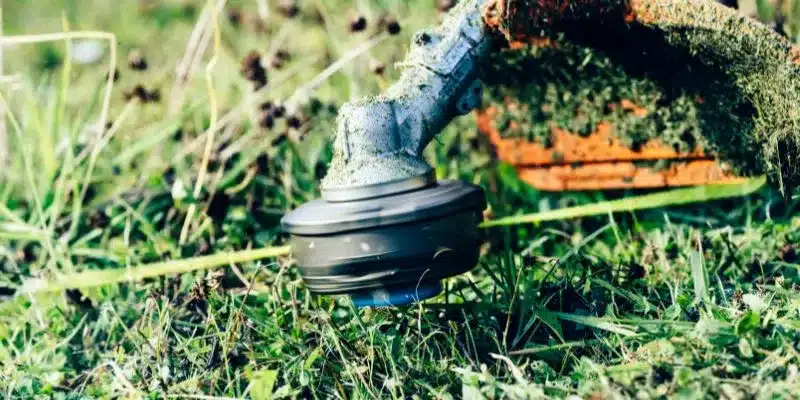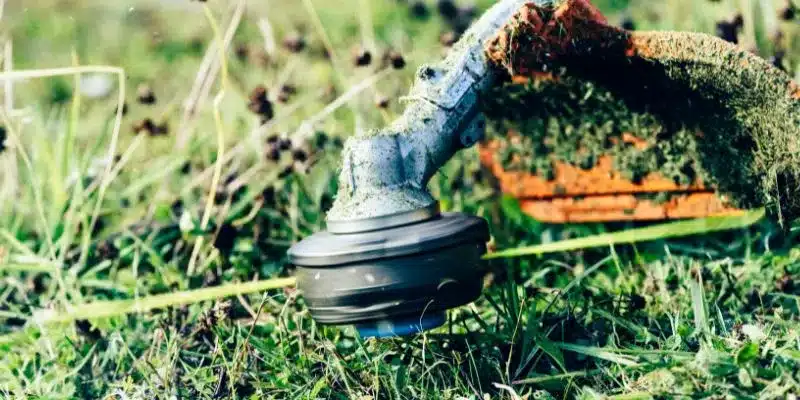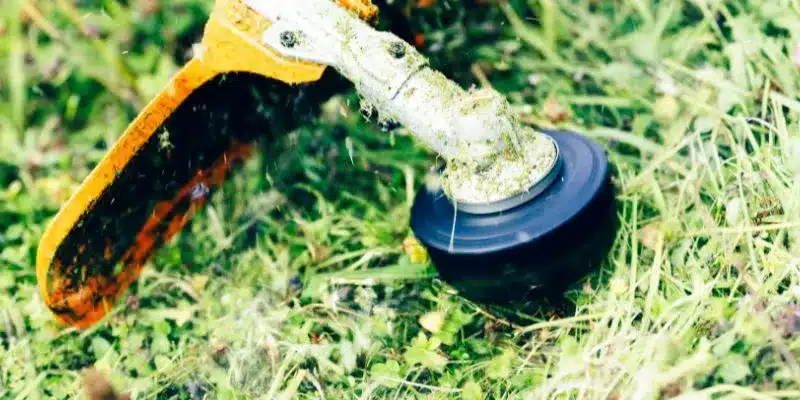Last Updated on March 25, 2024 by Sharaj
Having a well-maintained lawn can significantly enhance the overall aesthetics of your property.
To achieve that pristine look, many gardeners rely on strimmers, also known as string trimmers or weed whackers. However, the question arises, can you use a strimmer on wet grass?
In this article, we will delve into the topic and provide you with valuable insights and expert advice to help you achieve the perfect lawn without compromising its health.
Can You Use a Strimmer on Wet Grass?

Using a strimmer on wet grass can be a contentious issue among gardeners. Some argue that it’s a convenient way to maintain the lawn, while others believe it can be harmful. Let’s explore both perspectives:
The Pros of Using a Strimmer on Wet Grass:
Time-Saving Option: Strimming wet grass can be a time-saving option, especially during the rainy season when the grass grows rapidly.
Uniform Cutting: Strimmers can provide a more uniform-cutting experience, leaving the lawn with a neater appearance.
Tackling Overgrown Grass: If your lawn has become overgrown due to continuous rain, a strimmer can help you tackle the excess growth.
The Cons of Using a Strimmer on Wet Grass:
Potential Damage: Wet grass is more delicate and prone to damage. Using a petrol strimmer on wet grass can cause tearing, bruising, and scalping, leading to brown patches and uneven growth.
Clogging Issues: Wet grass clippings can clog the strimmer’s head, reducing its efficiency and requiring frequent stops for cleaning.
Safety Concerns: Wet conditions can make the ground slippery, increasing the risk of accidents while operating a strimmer.
Environmental Impact: Using a strimmer on wet grass can release more grass clippings into the environment, affecting the ecosystem.
The Best Time to Use a Strimmer on Wet Grass
To minimize the potential risks associated with strimming wet grass, it’s essential to choose the right time for the task. Here are some guidelines to follow:
Strim in the Late Morning or Early Afternoon: The best time to strim wet grass is when the morning dew has evaporated and the grass is no longer soaked. Late morning or early afternoon usually offers the ideal conditions.
Avoid Strimming After Heavy Rainfall: After heavy rainfall, the grass can be overly saturated, making it vulnerable to damage. Allow the lawn to dry out for a few hours or a day before using the strimmer.
Check Weather Forecast: Always check the weather forecast before strimming wet grass. If rain is expected later in the day, postpone the task to avoid wetting the grass again.Tips for
Strimming Wet Grass Safely
While using a strimmer on wet grass requires caution, following these tips will help you achieve the desired results without harming your lawn:
Choose the Right Strimmer: Invest in a high-quality strimmer with adjustable cutting heights and sharp blades to minimize the impact on wet grass.
Raise the Cutting Height: Set the strimmer’s cutting height to a higher position to avoid cutting the grass too short, which can cause stress and damage.
Clear Debris Before Strimming: Remove any debris or large objects from the lawn before strimming to prevent accidental damage to the strimmer or injury to yourself.
Use a Side-to-Side Motion: Adopt a side-to-side sweeping motion while strimming wet grass to distribute clippings evenly and reduce the risk of damaging the grass.
Wear Appropriate Safety Gear: Always wear safety goggles, ear protection, and sturdy footwear while operating a strimmer on wet grass.
Precautions to Take When Using a Strimmer on Wet Grass

Taking precautions can make a significant difference in the outcome of strimming wet grass. Here are some essential steps to follow:
Inspect the Area: Walk around the lawn and inspect the area for potential hazards such as hidden rocks, tree roots, or pet toys.
Keep Children and Pets Away: Keep children and pets at a safe distance from the work area to avoid accidents.
Avoid Strimming Near Flower Beds: Steer clear of flower beds and delicate plants to prevent accidental damage.
Follow the User Manual: Refer to the strimmer’s user manual for specific instructions on operation, maintenance, and safety guidelines.
Common Mistakes to Avoid When Strimming Wet Grass
Even with the best intentions, mistakes can happen. Here are some common errors to avoid:
Overlapping Too Much: Overlapping the cutting path excessively can stress the grass and lead to uneven growth.
Ignoring Maintenance: Failing to clean and maintain the strimmer regularly can reduce its efficiency and lifespan.
Rushing the Job: Taking your time and strimming at a steady pace is essential for achieving a clean and even cut.
Strimming Wet Grass Too Often: Limit the frequency of strimming wet grass to prevent unnecessary stress on the lawn.
Can You Use a Strimmer on Wet Grass Near Ponds or Water Bodies?
Operating a strimmer near ponds or water bodies requires extra care and consideration. Here’s what you should know:
Strimming near water bodies can pose a risk of pollution if grass clippings end up in the water. Always use a cordless strimmer with a collection bag or consider raking up the clippings afterward.
Frequently Asked Question
Can a strimmer cut wet grass efficiently?
While a strimmer can cut wet grass, it may not be as efficient as cutting dry grass. Wet grass can clog the strimmer and result in an uneven cut.
Can using a strimmer on wet grass damage the machine?
Strimming wet grass can potentially lead to clogging, which may affect the strimmer’s performance. Regular cleaning and maintenance can help prevent damage.
Is it safe to strim wet grass on a hill?
Strimming wet grass on a hill can be riskier due to the slippery surface. Exercise extra caution, wear appropriate footwear, and avoid steep slopes.
How often should I strim wet grass?
It’s best to limit strimming wet grass to when it’s absolutely necessary. Frequent strimming can stress the grass and affect its health.
Can I use a battery-powered strimmer on wet grass?
Yes, battery-powered strimmers can be used on wet grass. However, ensure the battery is fully charged to avoid interruptions during the task.
Can I strim wet grass if I have a mulching attachment?
Yes, a mulching attachment can help disperse grass clippings more evenly, reducing the risk of clogging when strimming wet grass.
Conclusion
Using a strimmer on wet grass can be a convenient solution for maintaining your lawn, especially during the rainy season. However, it’s essential to follow the right techniques, take necessary precautions, and avoid common mistakes to protect both your lawn and the strimmer.
By choosing the appropriate time to strim, using the right equipment, and practicing safety measures, you can achieve a well-groomed lawn without harming the grass or the environment.
Remember, your lawn’s health and appearance rely on how well you care for it. Strim responsibly and enjoy the beauty of your well-maintained lawn.

